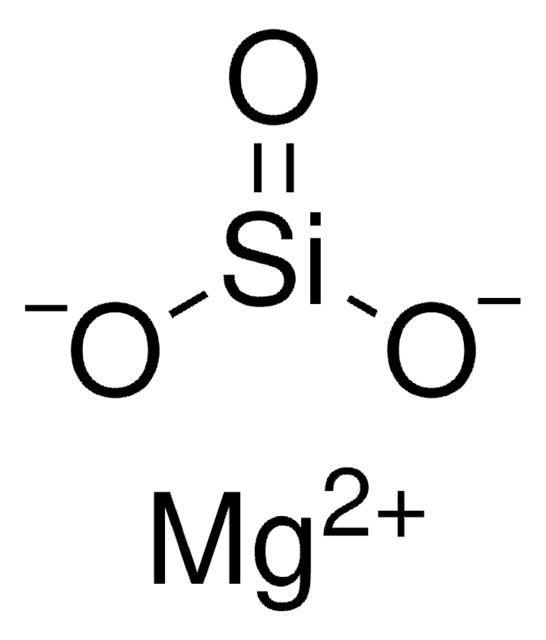46385
Florisil® Inorganic Adsorbent
60-100 mesh
Synonym(s):
Florisil®, Activated magnesium silicate, Magnesium silicate
About This Item
Recommended Products
product name
Florisil® Adsorbent for Chromatography, 60-100 mesh
grade
standard
Quality Level
form
coarse powder
technique(s)
LPLC: suitable
matrix
Magnesium silicate hydrate
matrix active group
magnesium silicate hydrate
particle size
149-250 μm
60-100 mesh
pore size
60 Å mean pore size
separation technique
hydrophilic interaction (HILIC)
SMILES string
[Mg++].[O-][Si]([O-])=O
InChI
1S/Mg.O3Si/c;1-4(2)3/q+2;-2
InChI key
FKHIFSZMMVMEQY-UHFFFAOYSA-N
Looking for similar products? Visit Product Comparison Guide
Related Categories
General description
Application
- as column packing material in column chromatography
- as an adsorbent in gas chromatography with electron capture detector (GC/ECD), capillary column chromatography, adsorption column chromatography
- in clean-up procedures in gas chromatography-tandem mass spectrometry and GC-FID
Caution
Legal Information
Storage Class Code
13 - Non Combustible Solids
WGK
nwg
Flash Point(F)
Not applicable
Flash Point(C)
Not applicable
Personal Protective Equipment
Choose from one of the most recent versions:
Already Own This Product?
Find documentation for the products that you have recently purchased in the Document Library.
Related Content
Low pressure liquid chromatography (LPLC) operates at low pressures, using a pump to drive the mobile phase onto the column.
Low pressure liquid chromatography (LPLC) operates at low pressures, using a pump to drive the mobile phase onto the column.
Low pressure liquid chromatography (LPLC) operates at low pressures, using a pump to drive the mobile phase onto the column.
Low pressure liquid chromatography (LPLC) operates at low pressures, using a pump to drive the mobile phase onto the column.
Our team of scientists has experience in all areas of research including Life Science, Material Science, Chemical Synthesis, Chromatography, Analytical and many others.
Contact Technical Service




